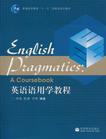英语语用学教程
出版时间:2010-1 出版社:高等教育出版社 作者:何伟 等 著 页数:164
Tag标签:无
内容概要
《普通高等教育“十一五”国家级规划教材·英语语用学教程》用英语写成,举例新颖,内容生动,充满当代语用学的气息。作为入门教材,该教程既体现了专业学习的渐进性特点,又呈现了语用学的最新发展动态,是一本理想的语用学知识读本。全书每一章都附有练习题。这些习题均针对相关章节内容而设计,便于学生掌握所学章节知识,并有助于学生提高自身解决实际语言问题的能力,从而达到增强学生语言感悟性的目的。
书籍目录
1 Background and definitions1.1 Background ofpragmatic1.2 Definitions of pragmatics1.3 Component vs. perspective1.4 Uses ofpragmatics1.5 Aims ofpragmatics1.6 Summary and further readingQuestions for discussion2 Deixis and reference,2.1 Definition of deixis2.2 Types of deixis2.2.1 Person deixis2.2.2 Spatial deixis2.2.3 Temporal deixis2.2.4 Discourse deixis2.2.5 Social deixis2.3 Definition of reference2.4 Referential and attributive usages of referring expressions2.5 The role of context in identifying referents2.6 The role of co-text in identifying referents2.7 The role of anaphora, cataphora and zero anaphora inmaintaining reference2.8 Summary and further readingQuestions for discussion3 Presupposition3.1 Definition of presupposition3.2 Distinguishin presupposition from entailment3.3 Types of presupposition3.3.1 Existential presupposition3.3.2 Lexical presupposition3.3.3 Sfiuctural presupposition !3.3.4 Facdve presupp0sition3.3.5 Non-factive presupposition3.3.6 Counter-factual esipposidon3.4 Problematic properties3.4.1 Defeasibility3.4.2 Projection problem3.5 Summary and further readingQuestions for discussion4 Conversational implicature (I)4.1 Definition ofimplicature4.2 The cooperative principle4.3 The four conversational maxims4.3.1 Observing the maxims4.3.2 Non-observance of the mans4.4 Types ofimplicature4.4.1 Conventional implicature4.4.2 Conversational implicature4.5 Properties of conversational implicature4.5.1 Cancelability4.5.2 Non-detachability4.5.3 Calculability4.5.4 Non-conventionality4.6 Summary and further readingQuestions for discussion5 Conversational implicature (II)5.1 The politeness principle5.2 The six main maxims5.2.1 The tact maxim5.2.2 The generosity maxim5.2.3 The approbation maxim5.2.4 The modesty maxim5.2.5 The agreement maxim5.2.6 The sympathy maxim5.3 The relationship between the politeness principle andthe cooperative principle5.4 Problems with Leechs politeness principle5.5 Summary and further readingQuestions for discussion6 The relevance-theoretic framework6.1 The origin of relevance theory6.2 The principle of relevance6.2.1 The notion of relevance6.2.2 The cognitive and the communicative principles of relevance6.3 The notion of context6.3.1 Cognitive environment6.3.2 Context selection6.4 Relevance-guided comprehension6.4.1 A comprehension heuristic6.4.2 Implicature vs. explicature6.5 Constraints on relevance6.5.1 Conceptual and procedural encoding6.5.2 Types of contextual effects6.6 Summary and further readingQuestions for discussion7 Speech act theory7.1 Definition of speech act7.2 Composition of a speech act7.3 Recognition ofillocutionary force7.3.1 Definition ofillocutionary force7.3.2 Illocutionary force indicating devices7.3.3 Felicity conditions7.4 Classification of speech acts7.4.1 Approaching the functions of speech acts7.4.2 Approaching the performance of speech acts7.5 Beyond speech act theory speech events7.6 Summary and further readingQuestions for discussion8 Conversation analysis8.1 Introduction8.2 Theoretical preliminaries8.3 Turn-taking organization8.3.1 Turn constructional unit8.3.2 Turn-allocation component8.3.3 Turn-taking rules8.4 Adjacency pairs8.4.1 Insertion sequence8.4.2 Conditional relevance8.5 Preference organization8.5.1 Preferred vs. dispreferred second8.5.2 Agreeing and disagreeing with assessments8.5.3 Repair8.6 Pre-sequence8.6.1 Pre-announcements8.6.2 Pre-requests8.6.3 Summons-answer8.7 Summary and further readingQuestions for discussion9 Conclusions9.1 Approaches to pragmatics9.2 The multidiscipfinary nature of pragmatics9.2.1 Pragmatics and branches of micro-linguistics9.2.2 Pragmatics and interdisciplinary fields9.3 The dynamic perspective of pragmatics9.3.1 The dynamics of communication9.3.2 The construction of meaning9.4 The application ofpragmatics9.5 Summary and further readingQuestions for discussionReferences
图书封面
图书标签Tags
无
评论、评分、阅读与下载
用户评论 (总计0条)
推荐图书
- 民法
- 动画项目制作管理
- 医护英语水平考试
- Visual C#2008应用开发教程
- 语言学实用教程
- 财经职业英语-附光盘
- 基础日语-听力教程教学参考书-1
- 应用文写作训练教程
- 世纪回眸
- 单片机系统设计与应用实例
- 七公主吉拉拉
- 认读三百字-上
- 喜羊羊与灰太狼学前启蒙系列-认读三百字(下)
- 瞬变电磁三维异常特征反演与瞬变场可视化
- 创业成功者的40条经验
- 知识产权法总论
- 国际视域下的重新犯罪防治政策
- 管道焊接过程智能控制技术及其应用
- 人文艺术欣赏
- 全国高等院校测控技术与仪器专业创新型应用人才培养规划教材-传感器原理及应用
- 会展服务管理
- 网站规划建设与管理维护教程与实训
- 第14回韩国语能力考试真题及解析·高级
- 中国报告.民生.2010
- 博雅汉语
